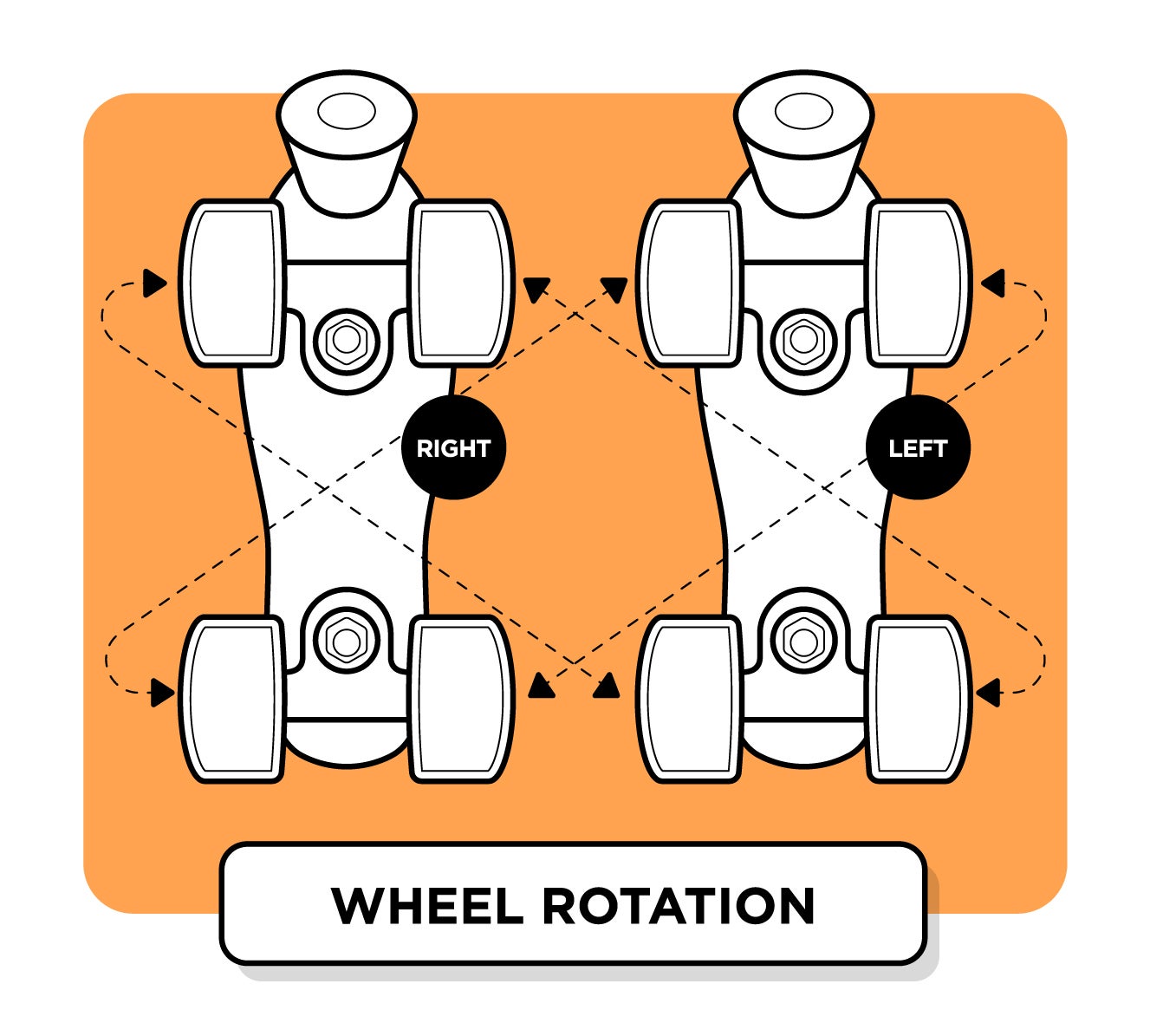
Getting Started
Looking to get started with your new Rookie roller skates? From unboxing your roller skates, to our ambassador videos - walking you through your first steps with your roller skates, we've got you covered!
Rookie Tutorials
We teamed up with Rookie ambassador @cecilleklaus to guide us on how to get started with your roller skates. Check out her skating know how videos below!
Learn how to get started with Rookie ambassador Cecille Klaus!
Learn how to fall safely with Rookie ambassador Cecille Klaus!
Learn how to stop with Rookie ambassador Cecille Klaus!
Learn how to go backwards with Rookie ambassador Cecille Klaus!
Unboxing your Rookie roller skates
STEP 1:
Make sure you are wearing full protective gear before you try on your skates for the first time, as this is the most likely time you will fall.
Let's make sure your roller skates fit first! It's best to do this on a soft carpeted floor as the skates will be more stable - also be mindful the wheels don't get marked in case you need to return them. Sit down & try on your skates, ensuring your heel is firmly in the back of the boot & laces are secure.
Take care and stand up slowly; You should be able to wiggle your toes freely, without any pressure on your toes when you're stood up.
Hopefully your Rookie skates fit like a dream & you can begin your rollerskating journey!
STEP 2:
Once you have established the skates fit nicely, it is advised to read your owner’s manual to become familiar with your skates and how to look after them properly.
Check out our artwork of the anatomy of a rollerskate to familiarize yourself with the different parts of your Rookie skates.
STEP 3:
Hardware check-up; With your Rookie skates in hand, check all nuts and bolts using a Rookie multitool.
We recommend loosening and tightening back up the axle nuts that hold the wheels on to make sure the wheels are secure but also spinning freely. Ensure that the axles have at least 2 threads showing after the nut head; the kingpin nut should also have at least 2 threads showing. The kingpin nuts are adjustable according to your own requirements - if you are a beginner this is best left alone and adjusted later as required.
Visually inspect the plate fixing nuts are tight and that the toe stop bolt is done up very firmly. It is important to regularly check the toe stop is kept tight and secure before, during and after each use.
What to expect?
After the first few outings, your skates will get to know you as you are getting to know them.
1. The boot upper will loosen up, although this will take a few weeks to be noticeable. The boot is slowly adjusting to fit you better and as this happens, you will also notice the laces need to be tightened up more which is normal.
2. The bushings will also start to settle overtime. They are an integral part of how the skates respond to your movements and are responsible for the overall control of the skates. They are adjustable by tightening or loosening the kingpin nut with a Rookie multitool.
Before each time you skate, you should do the following as part of your maintenance and skate safety routine:
a) Check the wheel/axle nuts to ensure they are still tight, slightly loosen and retighten so that the wheel is firmly held and spinning freely.
b) Check the plate fixing bolts and nuts are tight.
c) Check your toestop bolts are firmly tightened.
d) Visually check your skates to ensure everything is as it should be and free from any debris etc.
Anatomy of a Roller Skate
Looking for a technical breakdown of your roller skates? We've got you covered!
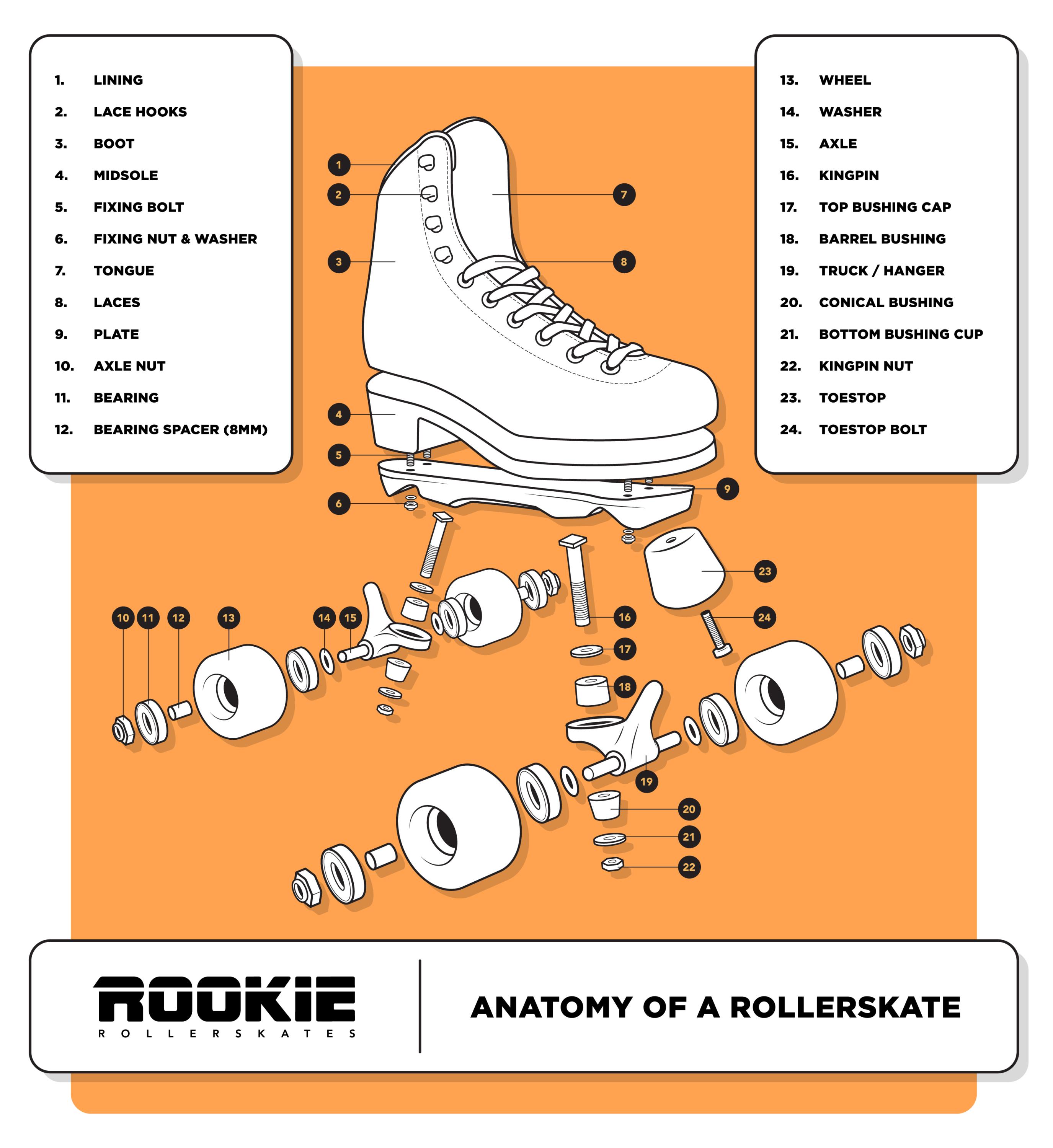
Plates explained
Plastic plates are more flexible which makes them better for beginners as they’re more forgiving, reduce the vibrations from the floor and are lightweight, which can make them easier to learn on. However, they generate less power because of the flexibility a plastic plate offers.
Metal/aluminium plates are more responsive than plastic plates and provide more feedback to the rider as the vibrations from the floor are transmitted in a more intense way. They can also generate more power as the rider can fine tune their technique. Metal plates are more robust, making them better for park skating.
Bushings explained
The bushings are the soft cushions that go on your trucks. They are made from Polyurethane, which is available in a range of hardness (called durometer).
Lower durometer number = Softer (easier to turn)
Higher durometer number = Harder (harder to turn)
When you put your weight on the side of the skates, the trucks and bushings work together to help you turn. The bushings are soft which means they can compress depending on which way your turn. This may create a squeaking sound when you are first breaking in your skates, but this will decrease over time as you use the skates more and more.
You can also adjust how easy or hard it is to turn by tightening or loosening the kingpin. The tighter the kingpin is, the more the bushings will be compressed thus making them less manoeuvrable.
Lastly, you will notice the bushings are two different shapes: conical and barrel. The barrel bushings go closest to your foot and act as an anchor, whereas the conical one goes closest to the floor and is coned to make turning more precise.
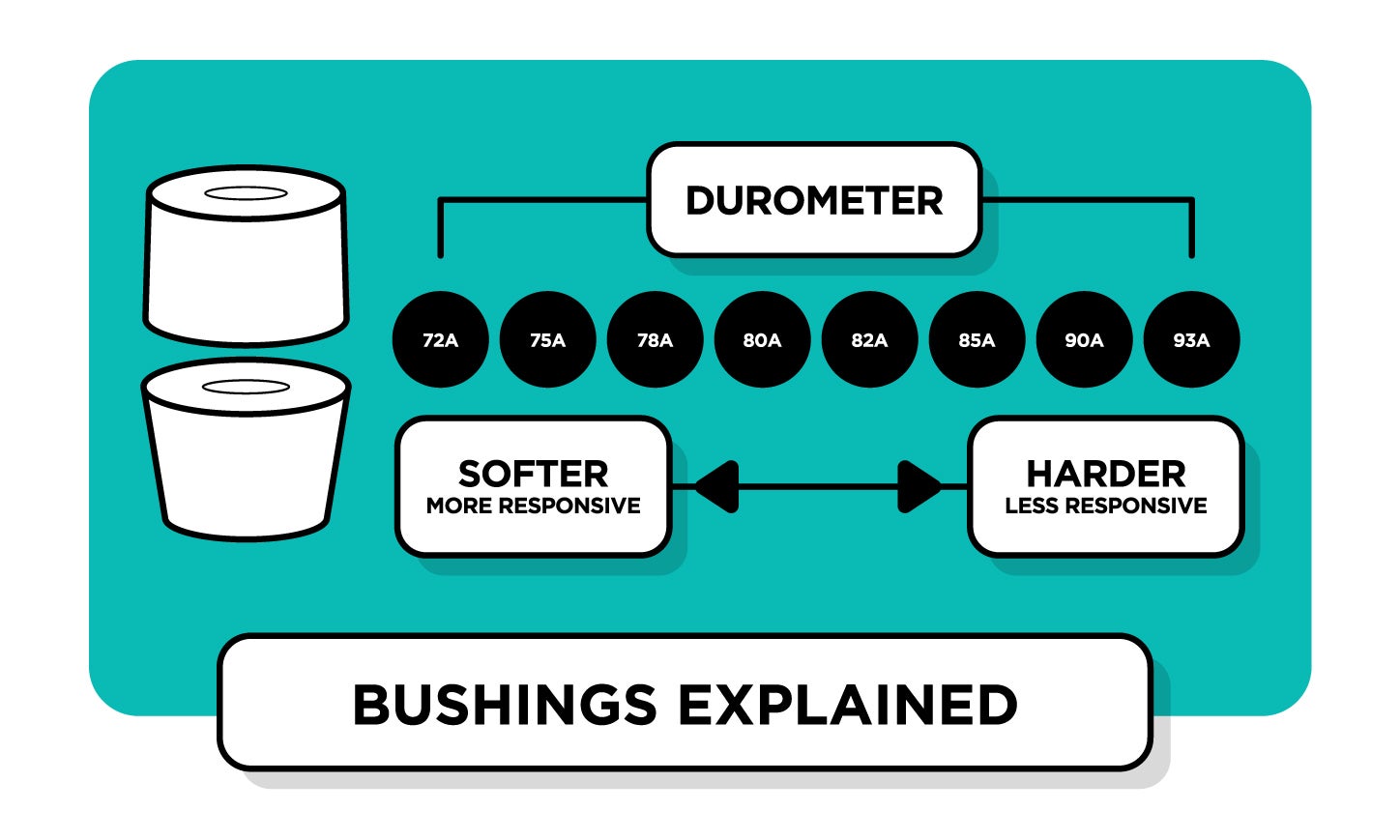
Bearings explained
From time to time, bearings need to be lubricated using dedicated rollerskate lube. You can take off the bearings to clean them and remove any debris that may affect their use. Regularly check the condition of the bearings and keep them well maintained.
It may be necessary to replace the bearings to improve performance and safety. To replace your bearings, you will need a Rookie skate tool and a bearing remover.
First take the wheels off, then remove the bearings using the remover tool. Ensure you keep hold of the spacer that goes between the bearings, as this needs to be reinserted between the new bearings. Once you have fully inserted your bearings and ensured the wheel can spin freely, you can put the wheels back onto the truck axle and tighten it back up.
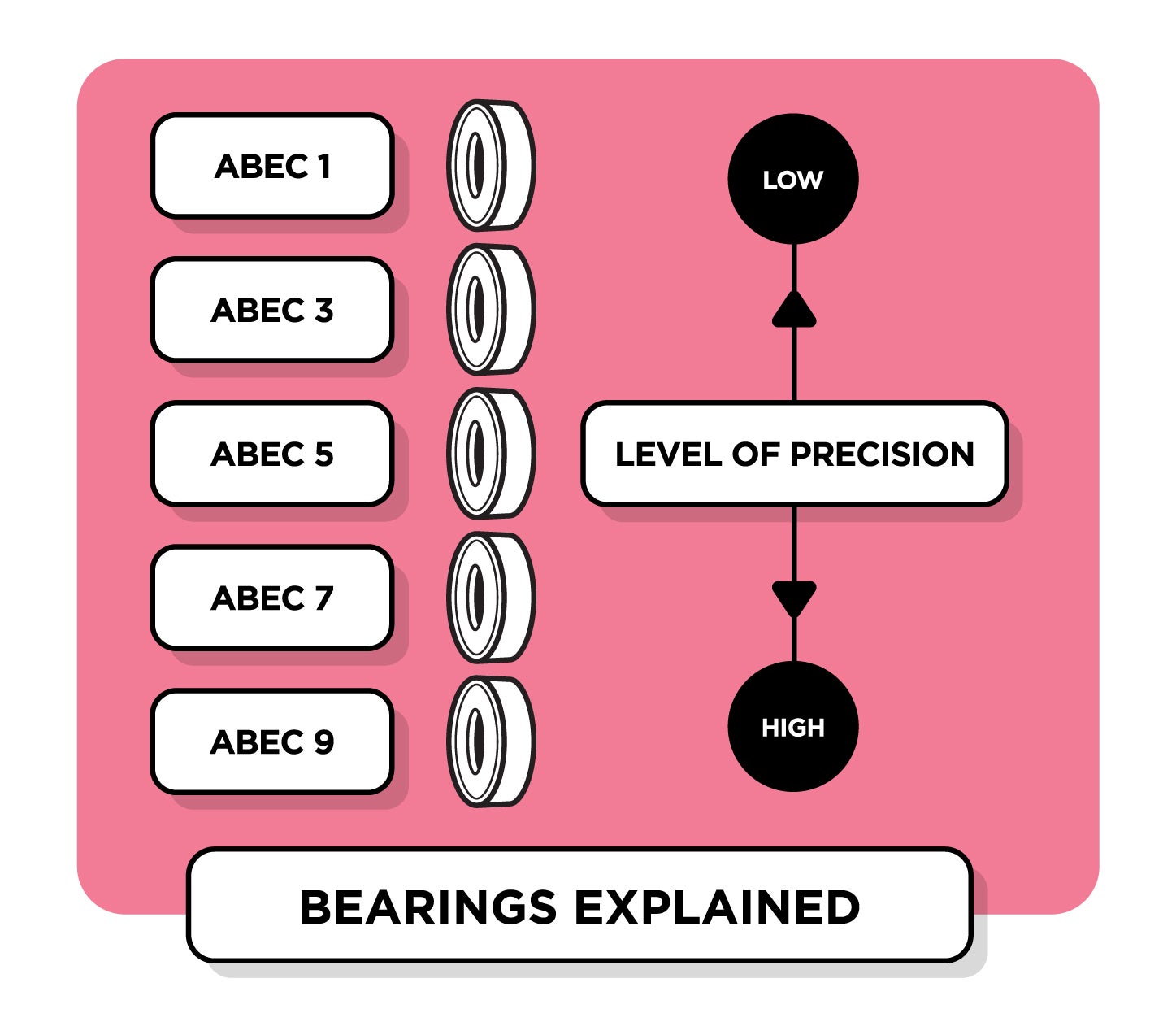
Equipment needed
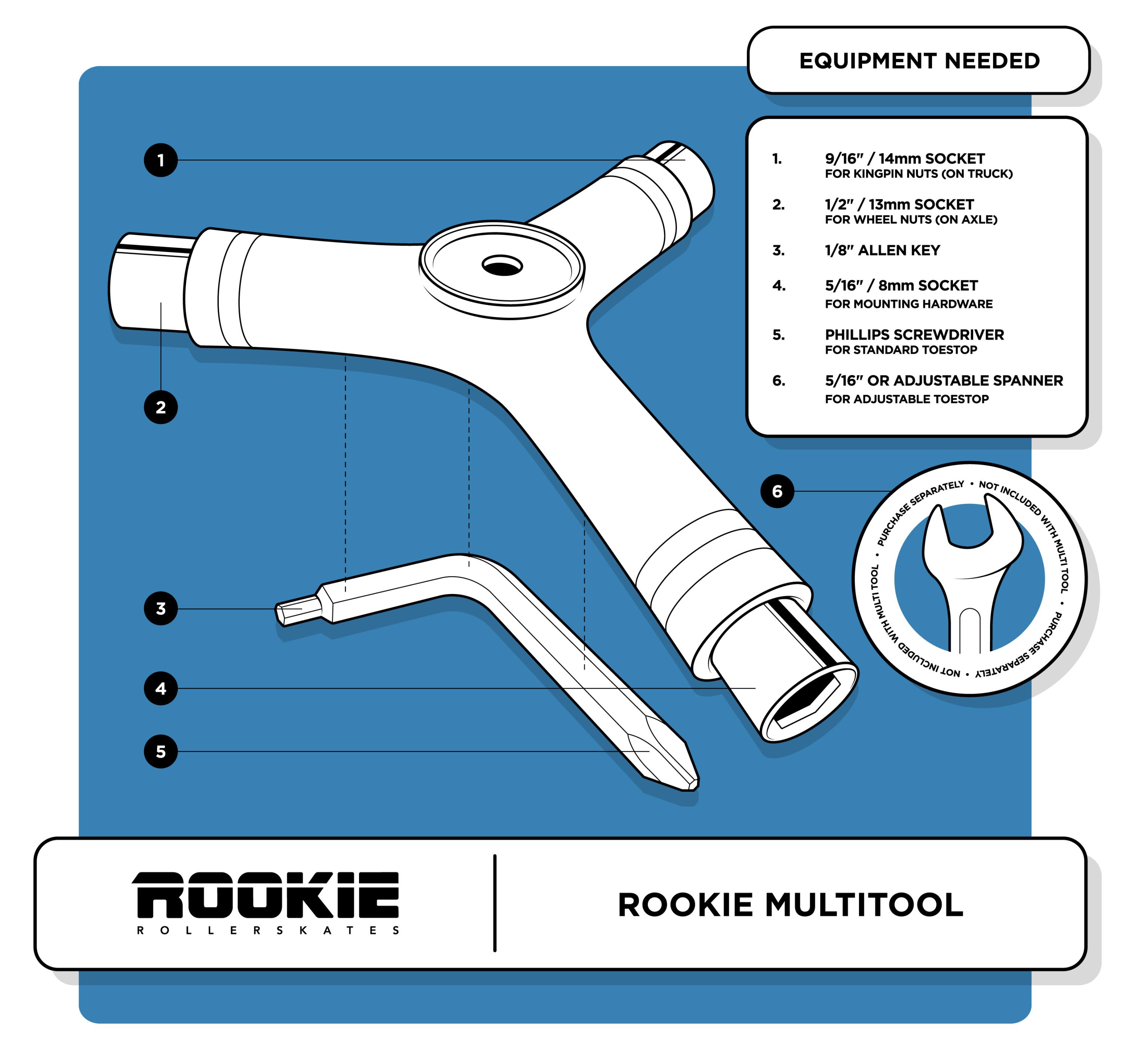
Wheel shape guide
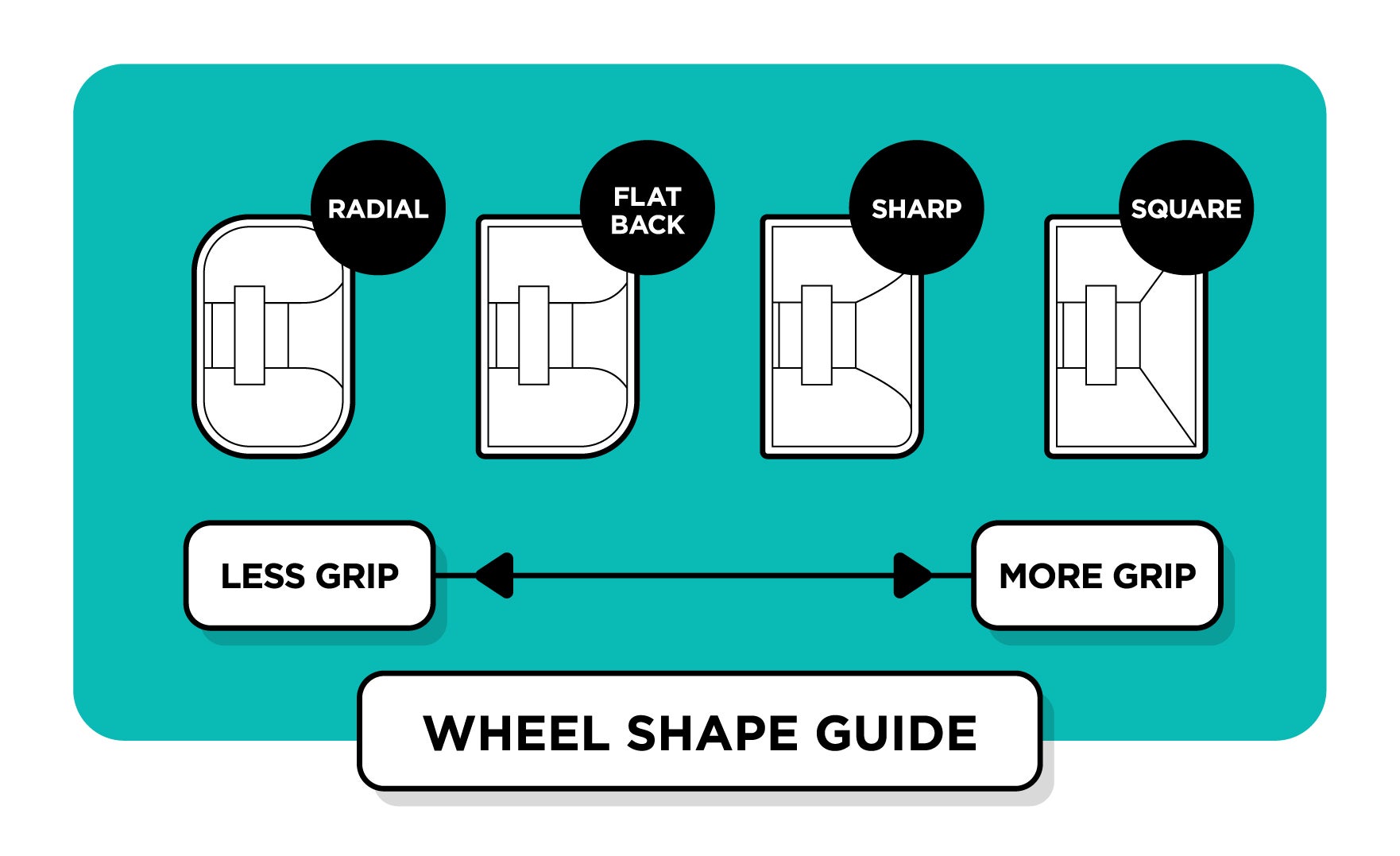
Wheels size guide
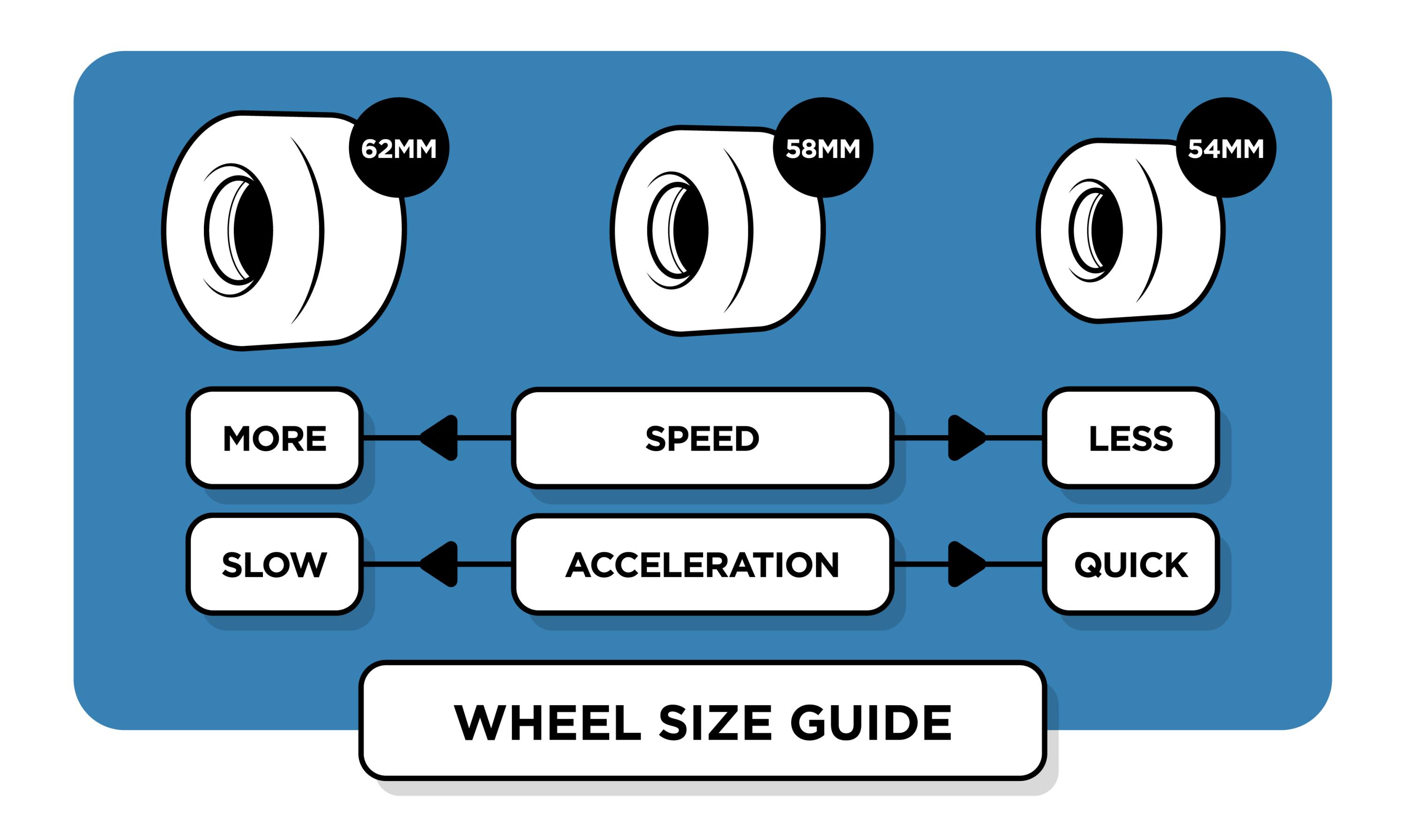
Wheel hardness / durometer
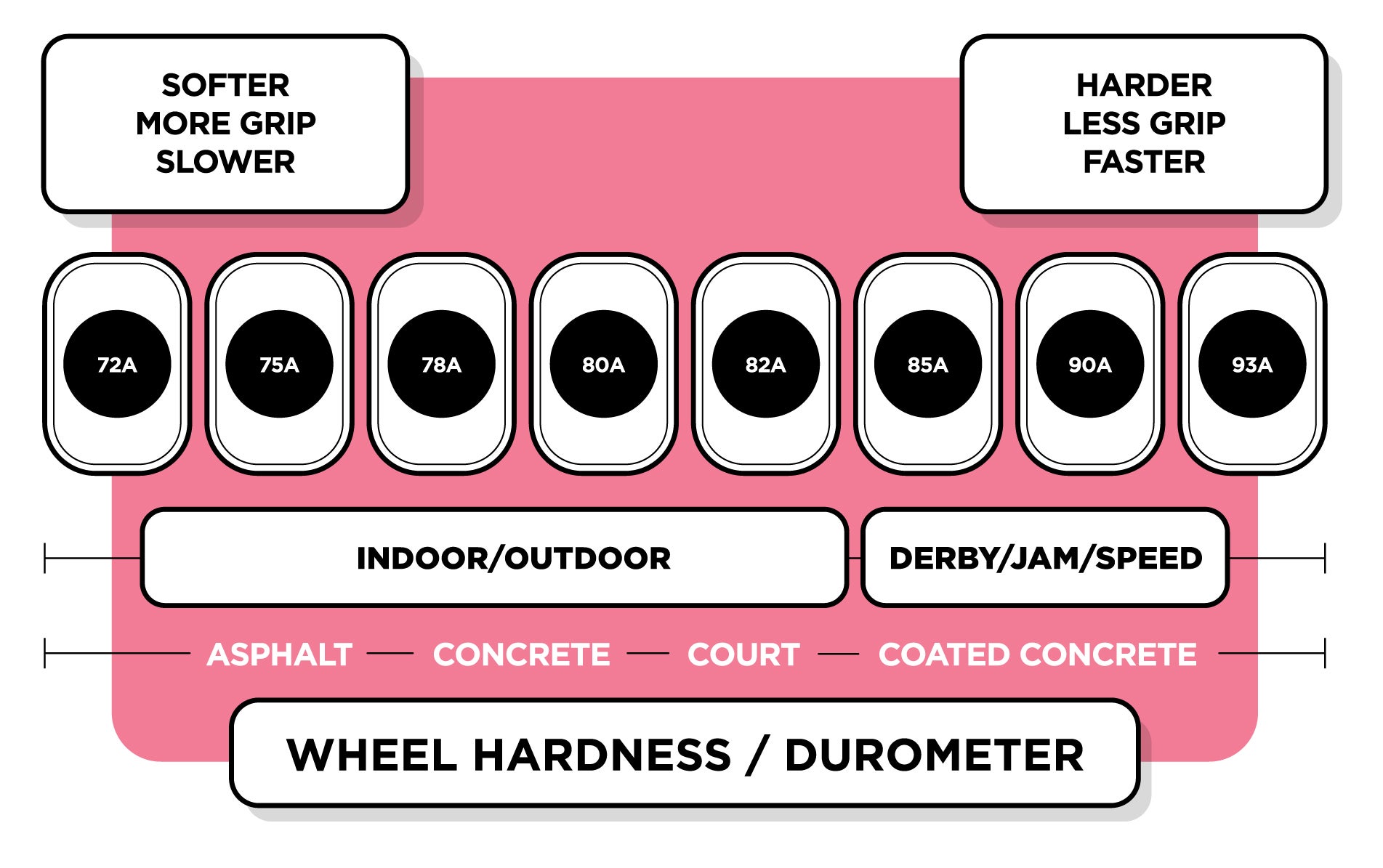
Wheel rotation
